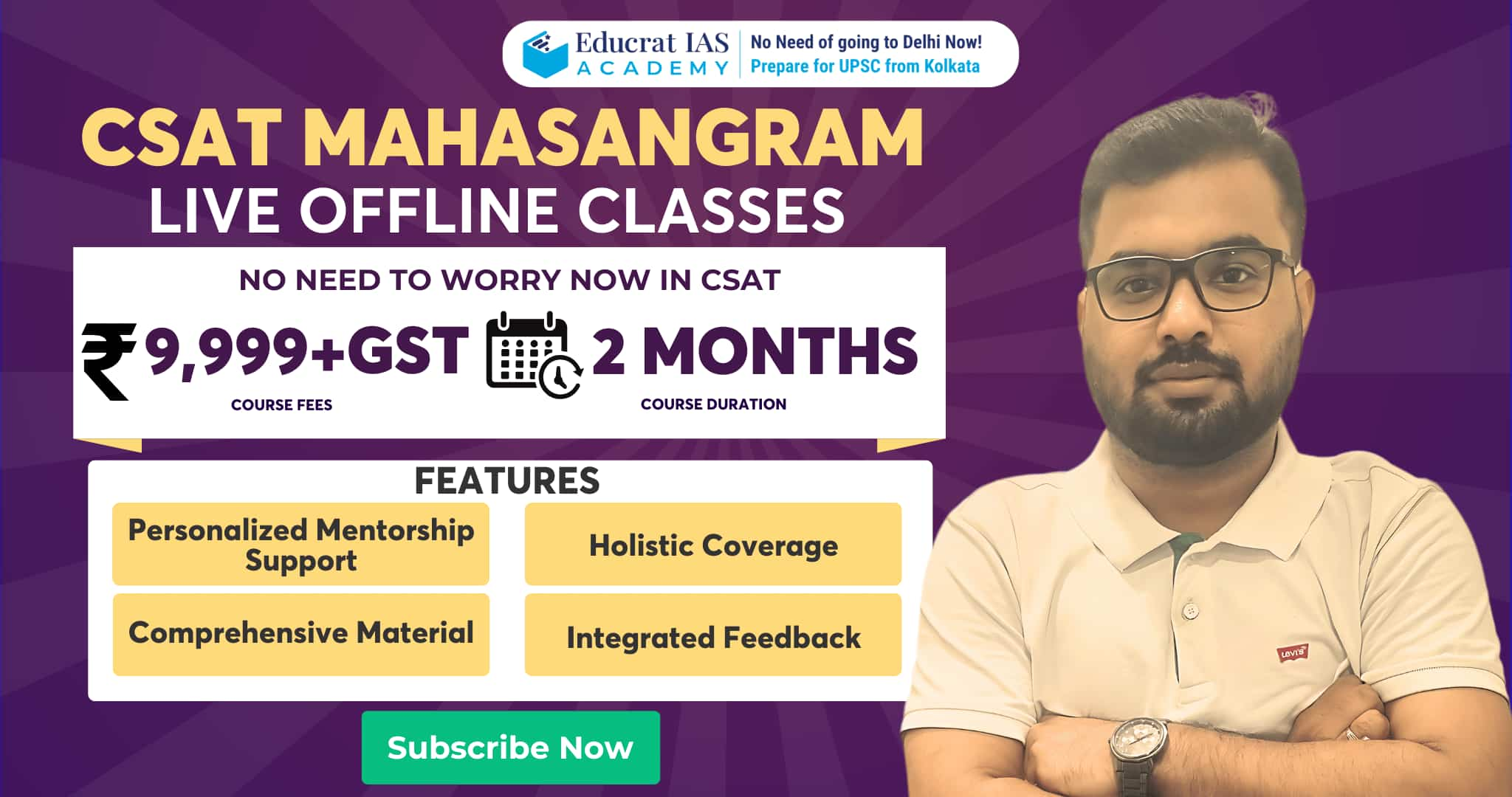8910154148 | 9163228921 | info@educratias.com
8910154148 | 9163228921 | info@educratias.com
Menu



The CSAT (Civil Service Aptitude Test) is a qualifying paper in the UPSC Prelims, requiring 33% which is 66 marks out of 200 marks to pass. It may appear to be a walk in the park, but if you are already familiar with the UPSC CSE’s uncertainty, you know that getting the required marks will need thorough preparation. It examines a candidate’s comprehension, interpersonal skills (including communication skills), logical reasoning, analytical ability, decision-making, problem-solving, general mental ability, basic numeracy (Class X level), data interpretation (charts, graphs, tables, data sufficiency, etc).
This CSAT Course aims to enhance UPSC Prelims Paper II preparation with a structured, efficient approach. Offered in classroom modes, it provides expert techniques, curated methods, and hands-on practice to help aspirants master CSAT effortlessly.
Rs. 10,000 + GST





Many CSAT manuals have been released by reputable publishers. The CSAT Manual by Tata McGraw Hill, on the other hand, is the one most often suggested. The usefulness of a booklet like this cannot be overstated. It is a one-stop destination for all of your prep needs.
You don’t have to read the entire book from beginning to end in order to benefit from it. The book is split down into sections, and you may pick and choose which sections you want to read based on your interests. This book covers a wide range of subjects thoroughly. In a matter of minutes, you can practice and revise each topic.
Educrat IAS provides India’s & Kolkata’s best Mentorship for preparation of all services under Civil Services Examination (CSE). We provide extensive and holistic preparation to a small batch of sincere & dedicated UPSC Civil Servant aspirants who aspire & dream to become a part of the coveted Civil Services.
EXCELLENT rating
Based on 503 reviews
Copyright 2025 Educrat IAS Academy.